A Guide to Buying D&D Minis
Published on August 18, 2020, Last modified on January 5th, 2021
If you play D&D with physical battlemaps, using miniatures for PCs, monsters, and even terrain helps provide an extra dimension (literally) to combat encounters.
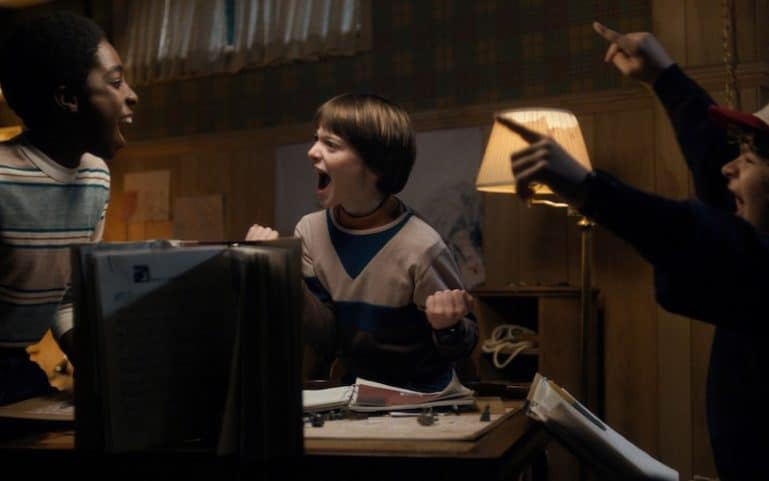
Table of Contents
If you have seen some of the landscapes that professional DMs like Matt Mercer at Critical Role put out, you can understand why people want to use miniatures for TTRPGs. Miniatures, while an added expense, help players and DMs connect with the game by creating three dimensional avatars that represent their characters or the creatures they are fighting.
D&D has taken huge steps over the past couple of years to move towards virtual settings and away from traditional, in-person games. Things like virtual tabletops, battlemap software, and even voice chat tools like Discord or Zoom, have allowed players that can’t meet up to still get together and play some D&D. At Arcane Eye, we love D&D in any form, but there is nothing like sitting around a table with your party, and NOTHING beats the feeling when the DM rolls out the sheet of paper with a prepared battlemap and starts breaking out miniatures.
What Are Minis?
In tabletop gaming, minis (or miniatures) are scale models that are used to represent player characters (PCs) and non-player characters (NPCs) on a battlemap. Miniatures have been used in gameplay, mainly combat and exploration, since the inception of Dungeons and Dragons back in 1974.
Miniatures can widely vary in height, material, and whether they are painted or unpainted.
Size
While there may be plenty of miniatures available on the market, D&D miniatures typically come with somewhat strict guidelines.
Game mats are usually made with 1 inch squares, so the base of the miniature should be 1 inch (or 25mm) in order to fit in the standard sized grids. Miniatures can come in 25mm – 30mm scale, which simply represents the millimeter conversion to scale the miniatures down from meters. In the case of miniatures, a 28mm scale figure would specify an exact scale of 1:60 for a 1.68 meter person.
In D&D, each grid square represents 5 feet and, typically, medium creatures (AKA most D&D races) fit one to a square. If you are looking for something that is larger than a medium creature, like a dragon, you will want to make sure that the figure scales properly using 1 inch increments for every 5 feet.
Materials
The material of your miniature will mean a lot to its finished product. As with anything, the more you pay, the higher levels of detail and quality will be.
Flexible Plastic
Flexible plastic miniatures are typically the least expensive. The most famous flexible plastic miniatures are definitely Reaper Miniature’s Bones line. Miniatures made from this material tend to be able to take the most amount of abuse, but the lack of rigidity will provide less detail to work with.
However, if you are looking to paint these miniatures yourself be warned that flexible plastic miniatures are known for not holding up super well to paint. The natural expansion and contraction of the plastic can cause flaking and cracking, even if you are extremely careful with them.
Rigid Plastic
Rigid plastic miniatures are usually a middle ground between flexible and metal miniatures in terms of price. Rigid plastic minis are a favorite for collectors and painters who will be making high quality, extremely detailed pieces for their games and collections.
Rigid plastic, while easier to paint than flexible plastic, will break much more easily if dropped or otherwise mistreated.
Metal
As with most things, if you want it to last go for the metal option. Sure, it will cost you a pretty penny but if you are going to be playing a character for a couple of years and want to make your character’s miniature something special, metal is the way to go.
Metal miniatures can handle a similar level of detail as rigid plastic minis, while also being steadfast enough to enjoy journeys in book bags and backpacks.
As might be obvious, metal miniatures are by far the most expensive, but sometimes the quality is worth it.
Paper
This was mentioned last because it is a slightly newer option that isn’t technically a miniature. The best options of paper miniatures can be found via u/PrintableHeroes’ Reddit post where you can find hundreds of free, printable paper miniatures. If you go this route, consider supporting PrintableHeroes on Patreon for their amazing work.
Naturally, paper miniatures will come with the downside of being extremely fragile and likely to wear out over a period of time, but there is certainly no cheaper way to get into the miniature game.
Painted/Unpainted
Not everybody has the time to paint minis these days. Those among us who are dedicated to the craft are certainly the unsung heroes of their individual tables, but if you are looking for a quick grab and go solution, there are plenty of painted options out there.
As you might expect, pre-painted miniatures are harder to come by and are usually more expensive upfront.
Do I need miniatures to play D&D?
No. Miniatures are an unnecessary expense as far as D&D is concerned. There are plenty of options to play D&D without miniatures including online play, theatre of the mind, or in-person battlemap play with tokens. Some tokens you can use to substitute for actual miniatures are washers, chess pieces, coins, etc.
Miniatures are used to enhance in-person battlemap play. Groups that play with miniatures find that they enhance immersion and allow players to visualize the environment in three dimensions.
How can I get D&D cheap miniatures?
If you are on a budget and looking to pick up some miniatures for cheap, our two suggestions would be Reaper Miniatures “Bones” Kickstarters and the D&D board games. Reaper’s Kickstarter allow you to pick up bulk, generic, unpainted miniatures for less than $0.80/mini. The D&D board games allow you to pick up D&D specific, unpainted miniatures for around $1.25/mini.
Where Can I Buy Minis?
There are a lot of factors that go into buying miniatures:
- Price
- Materials
- Painted/Unpainted
- Generic/Unique
With each of our top options, we will explain the different factors that have caused them to make the list. Seeing as most of these miniature makers make figures for more games than just Dungeons & Dragons, this list has been structured by how applicable to D&D they are:
1. Wizards of the Coast Store
Wizards of the Coast (WotC) are the current license holders of Dungeons & Dragons and were the creators of the 5th edition (the most successful edition to date). It’s a blessing and a relief that not only can we rely on WotC for solid D&D Sourcebooks, but we can also rely on them for the products to accompany them.
The WotC Store features a number of miniature booster packs that contain pre-painted miniatures specific to a certain theme or sourcebook. These packs are reasonably priced, coming in at around $4/mini. They are also, annoyingly, completely random so buying multiple packs to get all of the minis you are looking for may be in order.
The miniatures that come in these packs will not be the highest quality or the most detailed, but they will certainly get the job done at a reasonable price.
If you plan on running a published D&D 5e module, these boosters are a great way to increase the immersion for players by using actual figures represented in the story.
One thing to keep in mind, you cannot actually buy these products directly from the WotC site. You will have to either find a game store near you or buy them from a reseller such as Amazon. You can find licensed WotC Miniatures on Amazon here.
2. WoTC Board Games
A great way to get a ton of miniatures for cheap, while also getting D&D specific minis, is to purchase the licensed D&D board games.
So far, Wizards of the Coast has published four board games that are accompanied by miniatures:
Priced at between $50 and $65 each, each board game contains 40 plastic unpainted minis. This clocks each mini in at around $1.25 which is the among the best prices out there.
This, combined with the fact that you get a board game out of the deal, certainly makes this an option worth considering if you are looking for bulk D&D minis.
3. Miniature Market
Miniature Market is a great place to go for D&D specific, prepainted singles. Depending on the specificity of what you are looking for, they also offer the ability to buy pre-painted and unpainted, generic miniatures such as these Goblins.
Prepainted Singles
If you are looking for a specific D&D miniature and don’t want to break the bank on a custom one or paint your own, Miniature Market provides prepainted D&D singles at a reasonable cost.
Miniature Market has two series of D&D minis: Collector’s Series and Premium Figures.
The Collector’s Series minis are pre-painted figures that represent important NPCs in Wizard of the Coast’s published adventures. Some examples of these star NPCs would be Xanathar from Dragon Heist, Acererak from Tomb of Annihilation, and the infamous Froghemoth.
The Premium figures are more for players that want a pre-painted mini to fit their character, whether you’re a Female Dragonborn Sorcerer, a Male Human Ranger, or a Male Tortle Monk, Miniature Market is a great place to start.
Because these minis are being sold as pre-painted singles, they will be much more expensive than what we have looked at so far. The Premium figures fall at $7.49 a piece, while the Collector’s Series can range anywhere from $9-$45 depending on the size and rarity of the miniature.
Unpainted Minis
Miniature Market also has a number of great options for unpainted, D&D specific, and generic miniatures. Their WizKids and Pathfinder Deep Cuts line offer these options at close to $2.25/mini.
4. Reaper Miniatures
Reaper Miniatures are one of the top dogs of the miniature game. They have been around since 1994 and provide a full range of figures, paints, and accessories for anybody wanting to get into miniatures.
Reaper’s claim to fame is their highly successful Bones Kickstarters in which their backers pledge money up front for insanely cheap minis in 12-18 months. There have been 5 Bones Kickstarters, with the latest closing on November 2nd, 2019.
Late backers can still join via the Pledge Manager website, and while the prices are still really good, they aren’t as stellar as if you joined during the Kickstarter. Don’t let the fact that you missed out on the best pricing discourage you though. You can still get 140 plastic, unpainted minis for $175. This evens out to be $1.25/mini, which is hands down the best way to buy bulk D&D minis.
If you are not lucky enough to catch a Kickstarter or are looking for specific figures, Reaper Miniatures still has some of the best quality minis and a great selection. The majority of their unpainted singles run for $4/mini, falling at the higher end of the spectrum. The prices on their site range from $3 for basic figures to upwards of $30 for their dragons and awesome Cthulhu figure.
Keep in mind, you will not be able to purchase D&D specific miniatures (no Beholders or other D&D licensed creatures) from the Reaper site.
5. Hero Forge
Hero Forge is a revolutionary figure design and printing service that allows users to customize their miniature using a sleek interface and have it printed in a variety of materials.
The Hero Forge web software allows you to go through an RPG-esque character creation process and fine tune the details of your character. You can control pretty much anything from the broad details like what race your character is, all the way down to their eyebrows.
Prices range from $20 for a regular sized plastic figure to $220 for XXL figures in bronze. Keep in mind that all of these figures are unpainted, you will either need to either find a painting service or paint them yourselves to truly bring them to life. Hero Forge just raised ~$3,000,000 for their Full-Color Custom Miniatures with Hero Forge 2.0 Kickstarter. They released the beta software to backers on April 20th, 2020, but have not yet revealed a date for their full color figures to hit their site.
Update September 24th, 2020: Hero Forge’s full-color miniatures are live! You can check them out at heroforge.com, we all did a review of the Hero Forge full-color miniatures that covered the detail and durability of the figures.
Closing Words
There are tons of places to buy D&D minis out there but, based on our experience, these are the places that will guarantee the best prices and quality.
Do you have a place you love to buy D&D minis? Leave us a comment below!
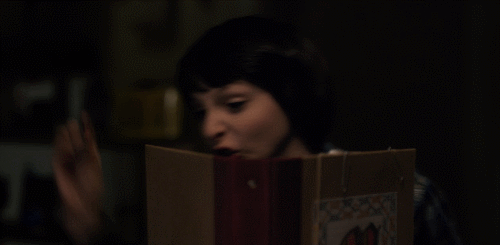
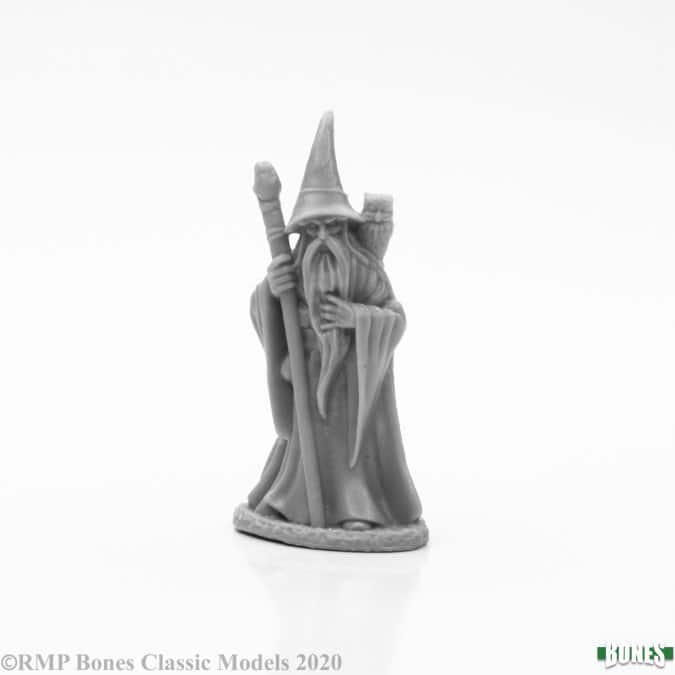
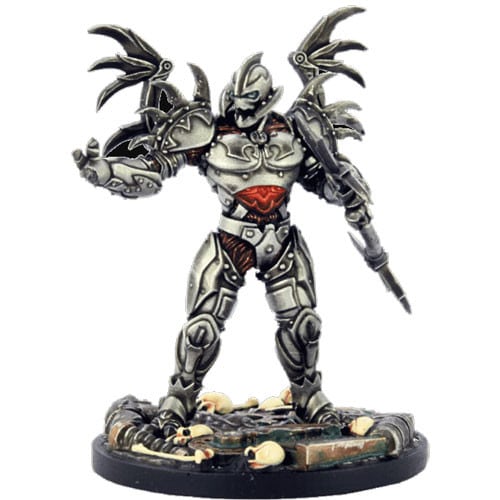
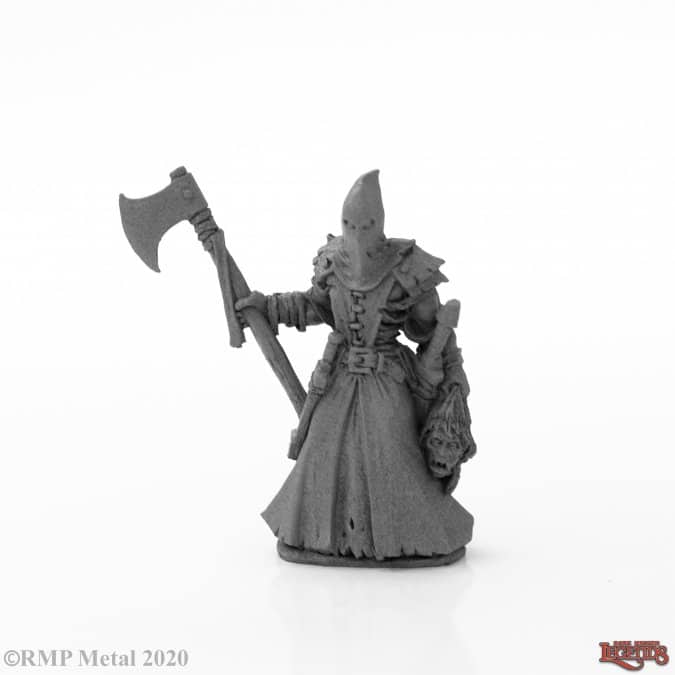


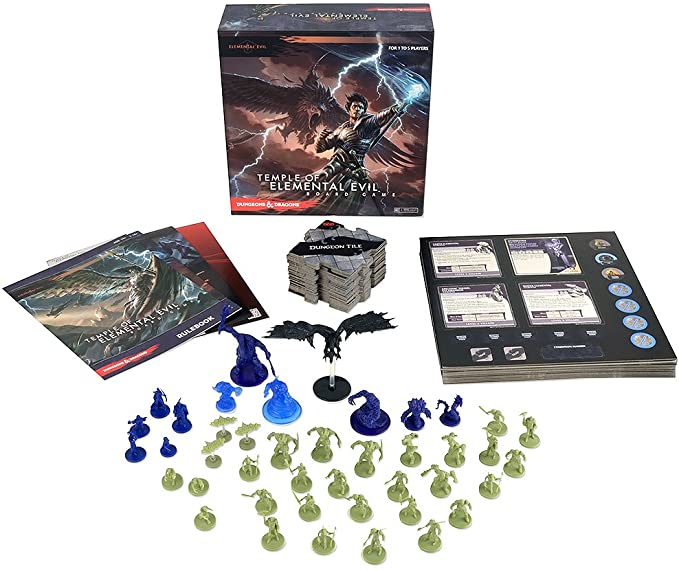
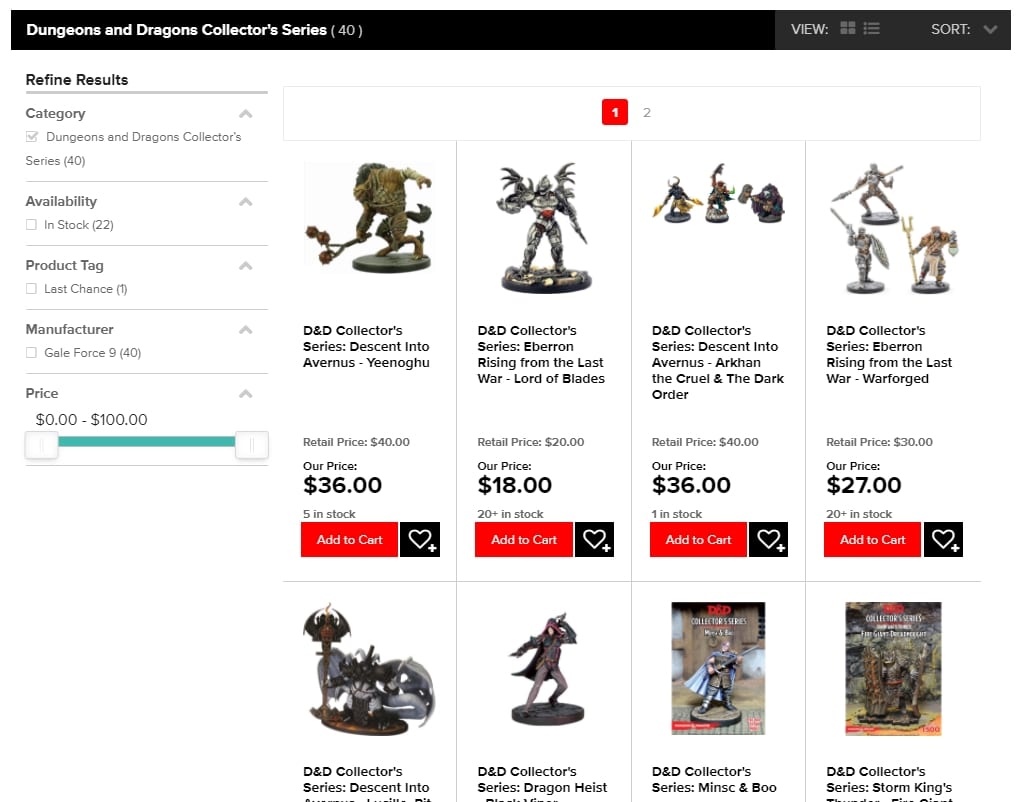
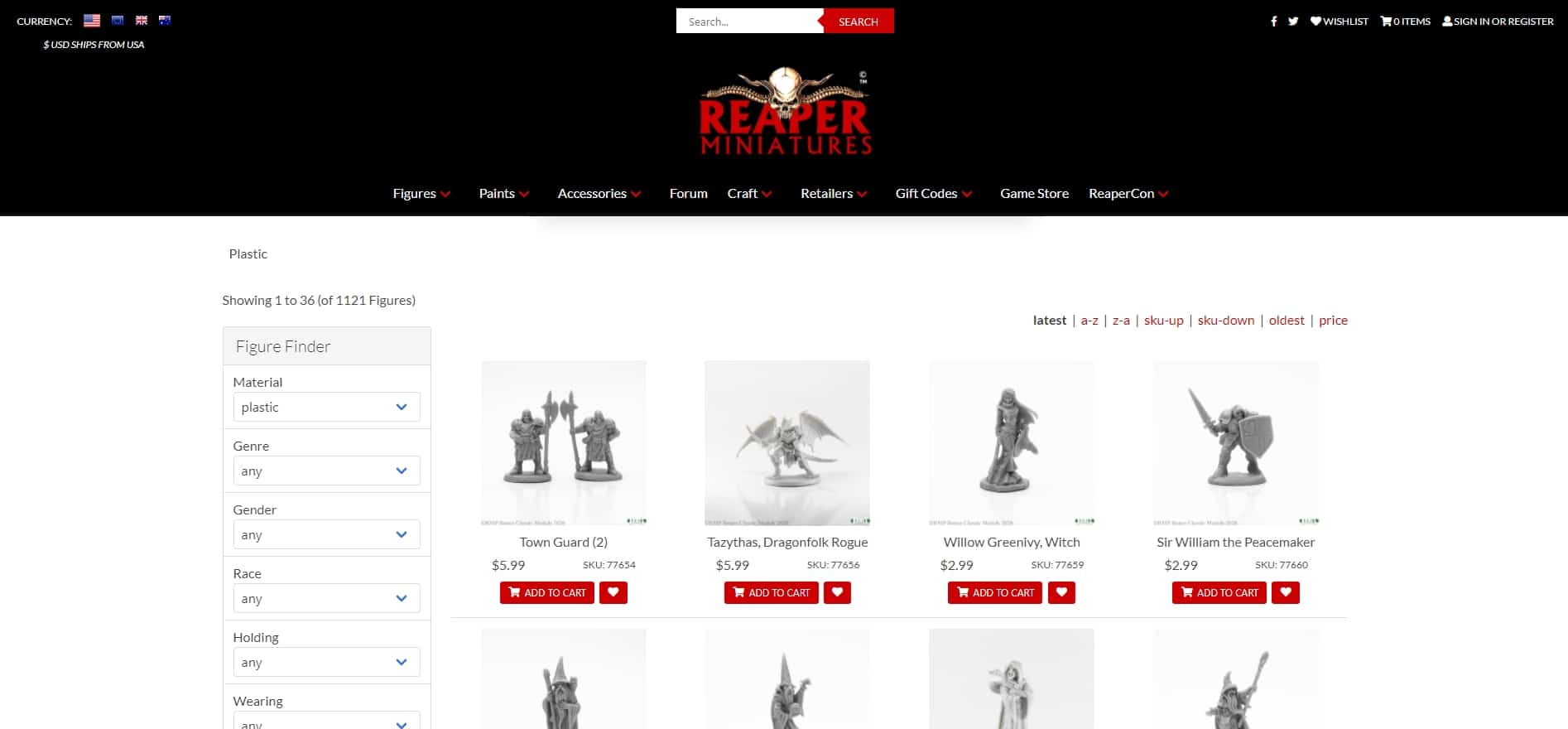
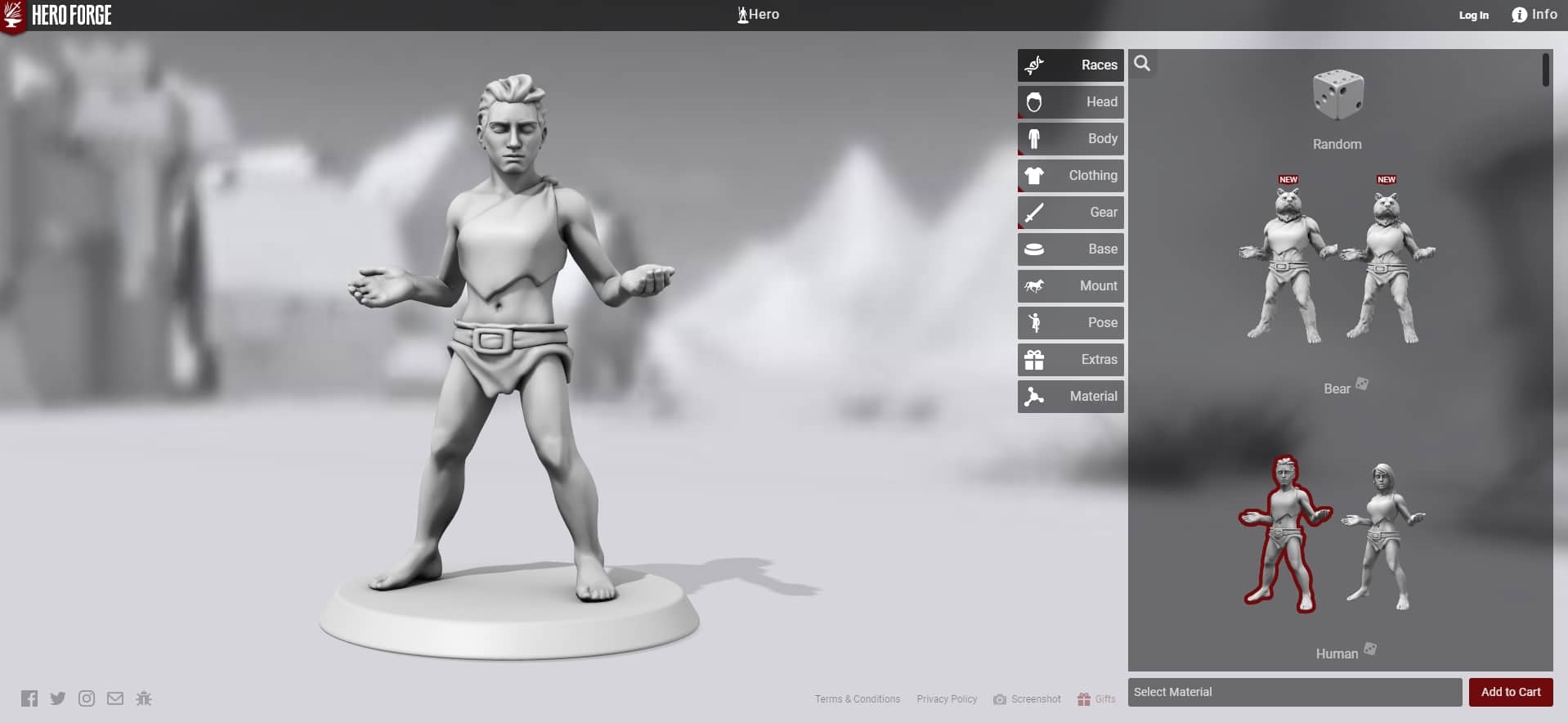

I’m a fan of Hero Forge myself. Not only can I get a nice quality highly customizable mini from them, but since I’m not an artist it’s a good way to let my players see what a new npc looks like.
I agree! Can’t wait until their color minis are available cause I’m also terrible at painting.
The math is off in the section about the Reaper Bones pledge manager: $175.- for 140 miniatures works out to $1.25/mini, not $0.80/mini.
Good catch! Thank you Jaap ????
well… you could maybe add Creature and Player tokens
– buy wooden circles on Amazon
– search online for character pictures and monster artwork
– glue it on top of the wooden / cork circle
– finish it off with plastic cabuchon stickers
That’s a great low-cost option for sure!